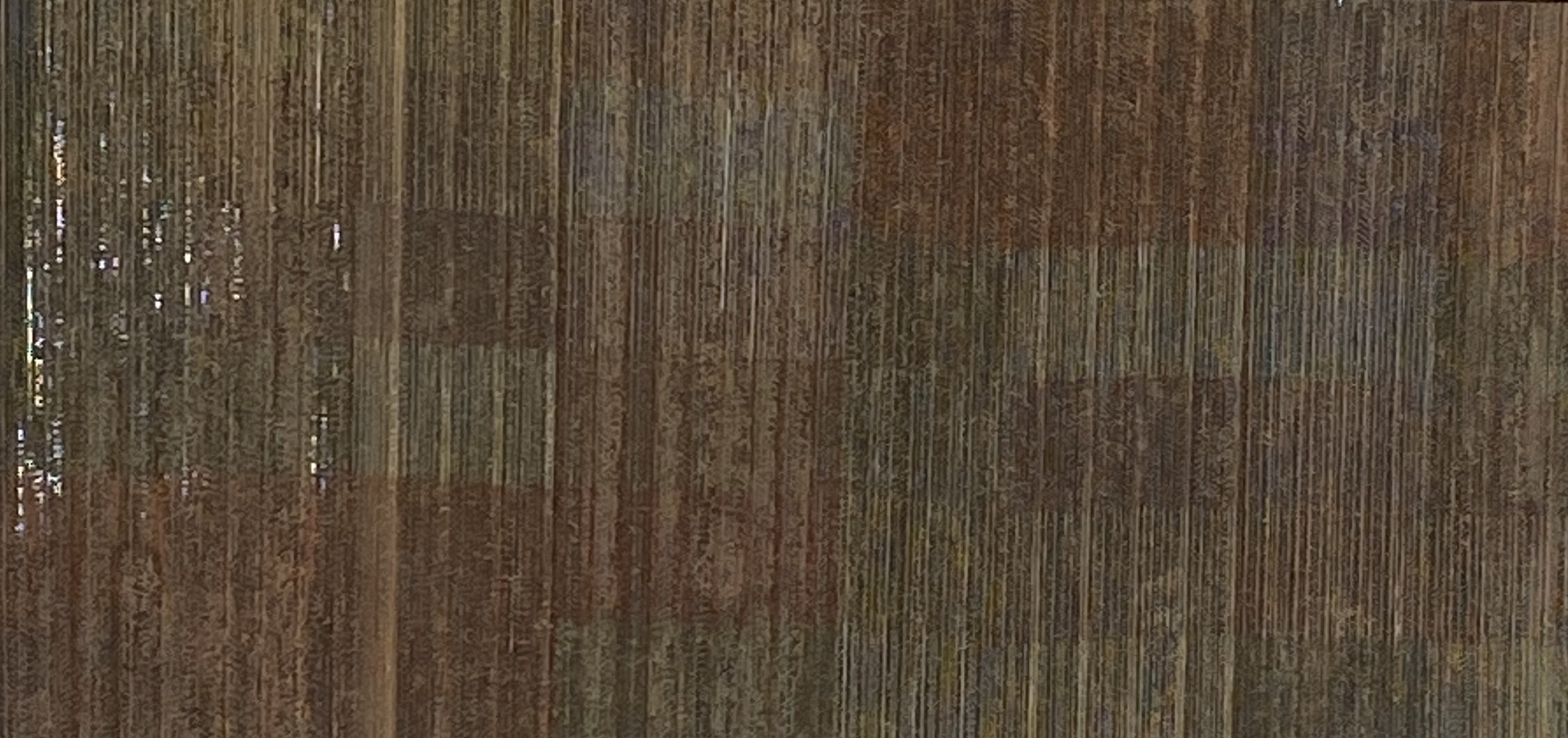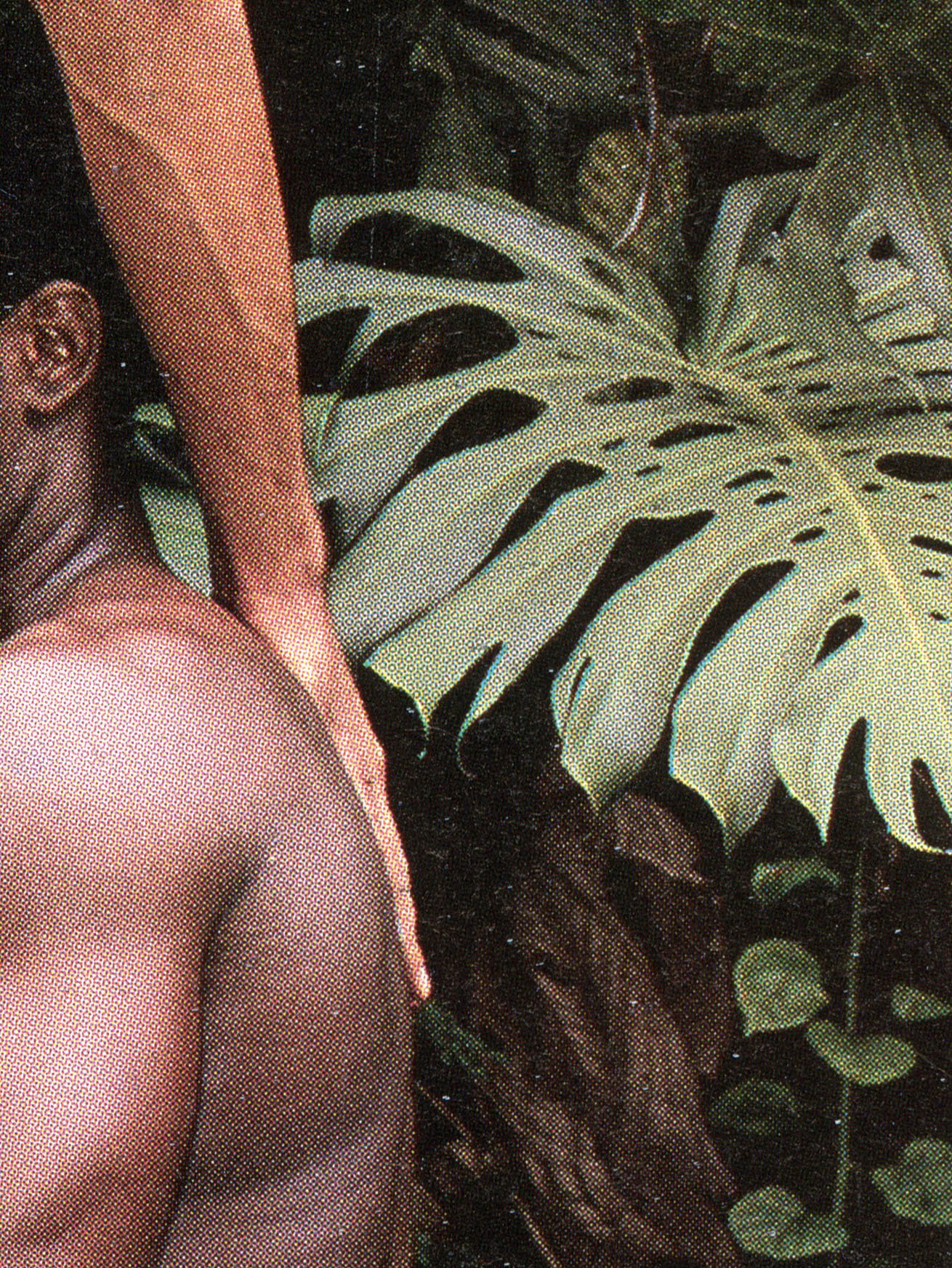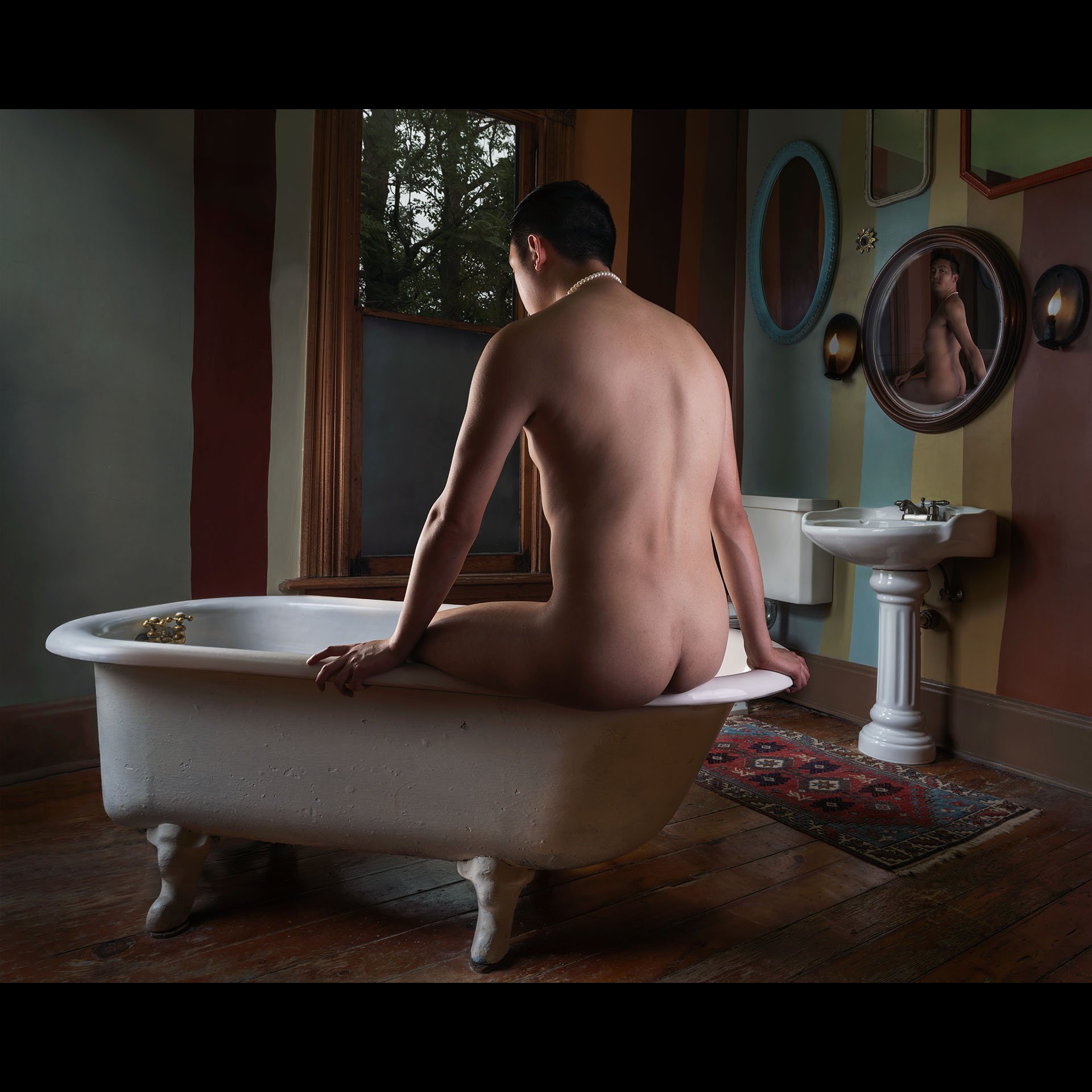ROY presents: Aaron Peters, Carmelo Amenta, & Darren Lee Miller
Aaron Peters
ROY asks
What is your name and affirmed pronouns?
Aaron Peters (He/Him/His)
How has art (whether it be your own or art in general) changed you?
I’m bored by everything else other than art.
How did you start your artistic practice?
When I started grinding pepper onto electric oven burners, the pepper would crackle and sparkle.
When a first-time viewer sees your work, what is the first word that you hope they think when looking at it?
Silence
Carmelo Amenta
Growing up in a post-Reagan Era conservative Catholic household, sexuality was never discussed. Watching Westerns with my father, I slowly came to realize that I did not want to be a cowboy. I wanted to fuck the cowboy. This work, Intricate Rituals, explores how representations of the male figure are formed and abstracted by the queer gaze to express desire, tension, violence, and the longing of intimacy. Using the cowboy as a conduit of American masculinity by conflating these ideas with appropriated photographs from gay pornographic magazines and typewritten text.
The magazines date from the height of the HIV/AIDS epidemic to the year I was born, 1995. This addresses the ripple effect the epidemic had on the queer generation born directly after it started. I respect the histories in which these photographs initially existed by keeping the ephemera intact; staples, dog ears, and binding of the pages. At the same time, I formulate a new narrative by abstracting and fragmenting the figures. I bring my perspective into this work by incorporating text from my own experiences before I came out of the closet and the years after.
The abstracted bodies in the photographs turn into visions of landscapes of the open range in which the cowboy roamed. This perception becomes a direct contrast to the privacy and confinement of the closet. The closet and the expansive landscape are contradictory settings, yet they share feelings of loneliness and isolation. The work is an amalgamation of images that have traveled through time, molded by my own perspective, allowing access to the intricate rituals of navigating queerness.
ROY asks
What is your name and affirmed pronouns?
Carmelo Amenta He/Him
How has art (whether it be your own or art in general) changed you?
It has made me become a more confident person. It's really difficult to be shy when viewers have seen you naked in photographs.
How did you start your artistic practice?
I really started to hone in on my practice my last year of undergrad back in 2016. Since then it has been constantly transforming.
When a first-time viewer sees your work, what is the first word that you hope they think when looking at it?
Sensual
Darren Lee Miller
I began shooting How Do You Want to Be Seen? at the start of the pandemic. At first, I used gay dating apps to connect with potential collaborators. As the Coronavirus pandemic has worn on – and now Monkeypox and Polio, too – I’ve expanded recruitment to social media (Instagram and Facebook), word of mouth, and sometimes I invite participants just by asking them. I relinquish my authorial privilege in order to give people in positions of marginality the power to control their own depiction. Since many do not have Art & Design training, my role is to be both a photo technician and a careful listener, extensively brainstorming with each collaborator to reach a consensus on the image we create together. Every photograph is paired with a quotation from the person seen in the portrait, which is part of their answer to the question posed in the title of this series. The captions are sometimes written entirely by my collaborator, and other times I work with them to concisely piece together insights they’ve shared along the way.
ROY asks
What is your name and pronouns?
Darren Lee (Dee) Miller, they|them
How has art (whether it be your own or art in general) changed you?
The first piece of art that I remember learning about in middle school is Hieronymus Bosch's Garden of Earthly Delights triptych altarpiece. I was fascinated by the panel that depicted hell, where a bird-faced Satan stuffs humans into his beaked-mouth, and then shits them out in oily droplets through a potty-chair throne. In another part of the painting, people play wind instruments that look like recorders using their anuses instead of their mouths. It was all so weird and grotesque, and painted at the end of the 1400's! What that painting taught me was that, as long as you painted exceptionally well, the rules of decorum could be broken. And that it might even be celebrated. This work by Bosch is currently held in Madrid's Prado Museum, and I had the privilege to see it in person in 1994.
How did you start your artistic practice?
I don't remember a time when I wasn't creative, drawing, painting, crafting, building, and using a camera. I concentrated on art and science in high school, and then went to a state school in upstate New York for college, majoring in printmaking and photography. I graduated in 1995. After college I moved to New York City and worked at a photo agency for several years. Eventually, I decided commercial work was not the direction I wanted for my creative practice and I moved to Japan for a year, working as an English teacher and documenting my experiences with my camera just about every day. When I came back to the USA, I began working at a nonprofit community arts organization, curating their galleries, planning and teaching arts workshops, and scheduling concerts and performing arts events. I eventually had an exhibition of my Japan photos, and that launched me on a multi-year project of portfolio building for graduate school admission. I entered grad school in Boston for my MFA in 2004, nine years after I graduated from college. Since then, my exhibition and curatorial practices gained steam, and I was invited to serve in my first full-time college art faculty position in 2008.
When a first-time viewer sees your work, what is the first word that you hope they think when looking at it?
Narrative



